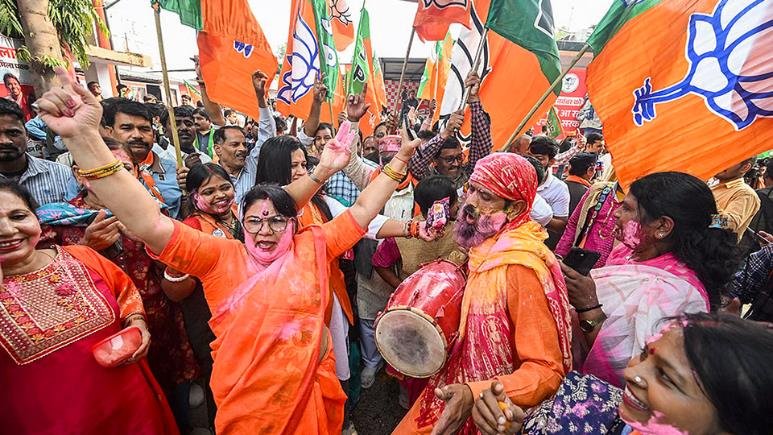The Bihar Assembly Election 2025 delivered a resounding mandate for the National Democratic Alliance (NDA), with the coalition not only reclaiming power but surpassing previous tallies to cement its dominance in state politics. This decisive victory was not coincidental—it was shaped by a combination of strategic decisions, targeted welfare policies, effective leadership, smart coalition-building, and sharp electoral management. Here’s a detailed analysis of the factors behind NDA’s majority in Bihar.
1. Masterstroke in Coalition-Building and Caste Arithmetic
One of the NDA’s biggest strengths was its ability to forge an inclusive coalition that transcended traditional boundaries. The NDA expanded its network to unite upper castes, Kurmis, EBCs (Economically Backward Classes), Dalits, and a significant portion of women voters. This multi-caste approach diluted the Opposition’s MY (Muslim-Yadav) core and rejuvenated the NDA’s own base. Parties like JD(U), BJP, LJP, and smaller allies worked together on a nearly flawless seat-sharing arrangement, preventing internal vote splits and bolstering ground-level unity.
2. The Influence of Women Voters
Women emerged as a decisive force, with their turnout often surpassing that of men in several districts. Key NDA schemes—such as financial assistance, job opportunities for women, and self-help group initiatives—directly addressed female aspirations. Nitish Kumar’s long-standing image as a pro-women leader was front and center, helping earn the critical “lady power” that tilted the balance and generated huge margins at the booth level
3. The “Nitish Factor” and Promise of Good Governance
Chief Minister Nitish Kumar remains synonymous with “sushasan” (good governance) in Bihar. Despite pre-poll speculation about an anti-incumbency wave, Nitish’s reputation for law and order improvements, development of infrastructure, and social welfare programs reassured both the rural and urban electorate. Slogans like “Bihar Ka Matlab Nitish Kumar” and “Tiger abhi zinda hai” resonated powerfully, fostering voter trust and cementing Nitish’s status as the coalition’s lynchpin
4. Strategic Use of Fear and Stability Narrative
The NDA’s campaign skillfully contrasted its governance with the Opposition’s so-called “jungle raj” era (1990-2005), characterized by lawlessness under previous RJD rule. By evoking memories of unrest, the NDA positioned itself as a safeguard for peace and economic progress, a move that resonated with older voters and those wary of instability.
5. Welfare Schemes and Direct Benefits
A huge factor for the NDA’s acceptance at the grassroots level was the delivery and promise of welfare benefits: free rice distributions, pensions, healthcare, and targeted schemes for the poor, youth, and women. These schemes helped build goodwill and a sense of trust in government actions, especially with new and first-time voters.
6. Disunited Opposition and Effective Narrative Control
The Opposition alliance (MGB) struggled with internal leadership issues, conflicting ambitions, and a lack of coordinated messaging. Meanwhile, the NDA focused on a single, strong narrative—development, unity, and stability—while effectively exploiting digital platforms and on-ground networks to combat negative perceptions and consolidate votes.
Conclusion
The NDA’s historic victory in Bihar was the result of a well-crafted alliance, astute caste management, targeted welfare approaches, and a seamless blend of leadership and narrative control. As the dust settles on this landmark election, it’s clear that political success in Bihar continues to depend on strategic adaptability and a deep understanding of evolving social aspirations


